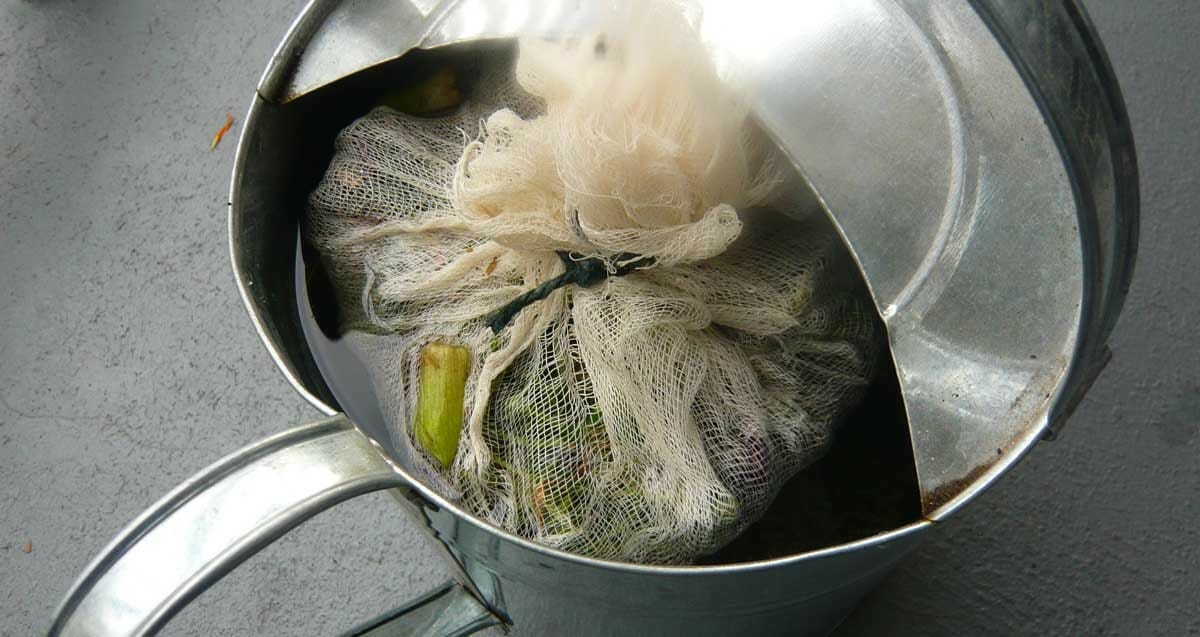It's warm, frothy and chocolate brown. You wouldn't want to drink it, but for your plants, it's a special treat.

Compost tea is simply compost in a liquid form. Just like a fine oolong, you take a pinch – or in this case a shovelful – and steep it in water. The nutrients leach out and you shower your plants with them. The roots drink them up and even the leaves can absorb them through their stomata, the tiny pores in leaf tissue.
But the real excitement around compost tea has less to do with nutrients (which occur in very low concentrations in the liquid) and everything to do with the microorganisms it contains, especially beneficial bacteria and fungi. It’s a bit like the concept behind the probiotics you would take for intestinal health, but applied to plants. By coating the roots or leaves of a plant with beneficial bacteria, the theory is that the bad guys – diseases like root rot or powdery mildew – can’t gain a foothold.
Enthusiasts say it is the secret to organic gardening success and can even wipe out serious diseases that have already gained a foothold. Skeptics say the claims about compost tea are based on anecdotal evidence and that scientific studies fail to show such positive results. For the final verdict, you’ll have to try it for yourself and see.
[mf_h2 align=”left” transform=”uppercase”]How to Brew Your Own[/mf_h2]
Brewing up a batch of compost tea is a fun weekend project that can only do good in the garden, even if it’s not a miracle cure. According to the experts, the key is to create an aerobic environment that will cause the best types of microbes to multiply in your tea (it’s also less stinky). The easiest way to oxygenate the brew is with a basic aquarium aerator (the type that connects to air stones with poly tubing) that can be found at any pet supply store.
Step 1: Place three or four air stones in the bottom of a five-gallon bucket and connect the tubing to the aerator. You may need to pick up a splitter valve (also called a gang valve) along with the aerator that allows several stones to run off of one device.
Step 2: Fill a five-gallon bucket one-third of the way with finished compost. Use the best quality compost possible – there should be no identifiable chunks of kitchen scraps, manure or other organic waste in it, just the crumbly brown stuff. The bottom of a compost pile is often the best place to find fully ‘finished’ compost.
Step 3: Add water to the bucket to within 2 or 3 inches of the top. It’s important not to use chlorinated municipal water, as the chlorine will kill the microbes. Rain water or well water are good options, but you can also dechlorinate city water by leaving it out in the sun for 24 hours. If you run the air stones in the water with the aerator, the chlorine will dissipate within an hour.
Step 4: Run the aerator in the compost slurry for two to three days, stirring the mix occasionally with a stick to encourage the substances in the compost to leach into the water.
Step 5: Filter the solids from the tea before using. If you’re applying the compost tea only on the ground, a filter with large holes is sufficient (a burlap bag will do). If you want to spray it on the leaves (if, for instance, you want to treat or prevent foliar diseases), you’ll need a finer filter, such as panty hose or an old pillow case. Simply hold the filter over another five gallon bucket and pour the mixture through it.
Step 6: Dilute the tea before applying at a ratio of one part tea to five or 10 parts dechlorinated water.
Step 7: Apply within several hours of turning off the aerator to prevent the mixture from becoming anaerobic and losing its potency. A spray bottle is sufficient for applying the tea to individual plants, but you’ll need a backpack sprayer (sold in garden centers for applying pesticides) if you’re going to apply it to the entire garden.
[mf_h2 align=”left” transform=”uppercase”]Compost Tea Tips[/mf_h2]
[mf_ul align=”left”]
- The best time to apply compost tea is in the early morning since the plants’ stomata close up once temperatures rise above 80 degrees. Stomata are concentrated on the undersides of the leaves, so make sure to spray from above and below.
- Compost tea connoisseurs actually brew the tea differently depending on whether it will be used for annual and perennial plants versus woody shrubs and trees. The former prefer a bacteria-dominated tea, while the later prefer fungal tea. To encourage high concentrations of bacteria, add an ounce of unsulphured molasses to the bucket when you start the brew. For fungi-dominated tea, add a quarter cup of flour instead.
- Kelp powder, rock dust, fish emulsion and other specialty amendments may be blended into the final product for an extra punch of nutrients. Serious compost tea makers may want to invest in a brewing kit, which automates the entire process with single prefabricated device. These range from five gallons in size for backyard gardeners to 500 gallons farm-scale units; costs range $75 to $10,000.
- Or, for the convenience-minded gardener, many nurseries and garden centers now offer compost tea by the gallon. They do the brewing for you – just bring your own jug and take it straight home to your plants.
[/mf_ul]